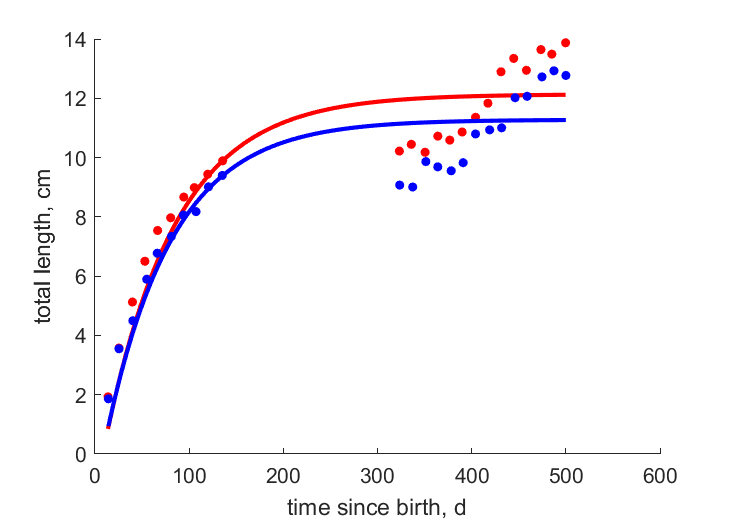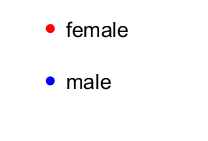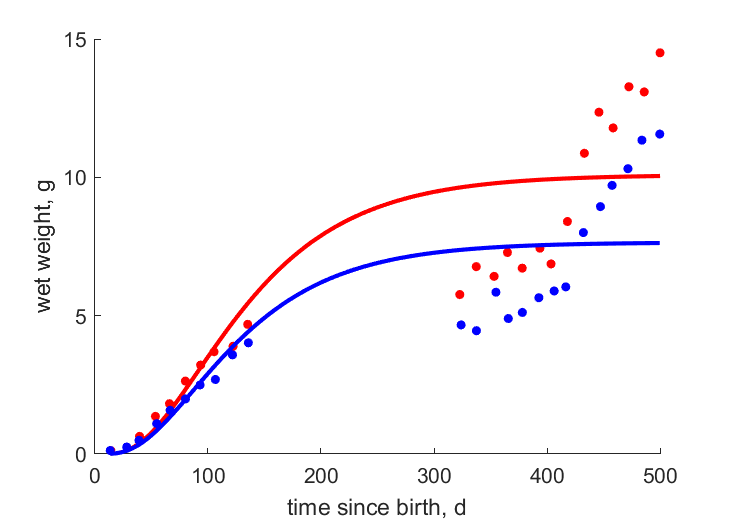Predictions & Data for this entry
| Model: abj | climate: Dwa, MC | migrate: Mo | phylum: |
| COMPLETE = 2.5 | ecozone: THn, MANW | food: biCi | class: |
| MRE = 0.089 | habitat: 0iFe, 0iMcp, 0jMm | gender: Dtfm | order: |
| SMSE = 0.021 | embryo: Fc, Mc | reprod: O | family: |
Zero-variate data
| Data | Observed | Predicted | (RE) | Unit | Description | Reference |
|---|---|---|---|---|---|---|
| ab_25 | 8 | 7.585 | (0.05189) | d | age at birth | BengBark1987 |
| ab_18 | 15 | 14.46 | (0.03611) | d | age at birth | BengBark1987 |
| am | 730 | 729.6 | (0.0005192) | d | life span | fishbase |
| Lp | 5 | 5.012 | (0.002333) | cm | total length at puberty | ConoRoss1982 |
| Li | 15 | 14.59 | (0.02703) | cm | ultimate total length | fishbase |
| Wwb | 0.00084 | 0.000858 | (0.02147) | g | wet weight at birth | BengBark1987 |
| Ri | 0.4575 | 0.4609 | (0.007411) | #/d | maximum reprod rate | fishbase |
Uni- and bivariate data
| Data | Figure | Independent variable | Dependent variable | (RE) | Reference |
|---|---|---|---|---|---|
| tL_f |   | time since birth | total length | (0.09979) | ConoRoss1982 |
| tL_m |   | time since birth | total length | (0.09945) | ConoRoss1982 |
| tWw_f |   | time since birth | wet weight | (0.2734) | ConoRoss1982 |
| tWw_m |   | time since birth | wet weight | (0.2804) | ConoRoss1982 |
Pseudo-data at Tref = 20°C
| Data | Generalised animal | Menidia menidia | Unit | Description |
|---|---|---|---|---|
| v | 0.02 | 0.01511 | cm/d | energy conductance |
| kap | 0.8 | 0.9993 | - | allocation fraction to soma |
| kap_R | 0.95 | 0.95 | - | reproduction efficiency |
| p_M | 18 | 766.3 | J/d.cm^3 | vol-spec som maint |
| k_J | 0.002 | 0.002 | 1/d | maturity maint rate coefficient |
| kap_G | 0.8 | 0.8004 | - | growth efficiency |
Discussion
- Males are assumed to differ from females by {p_Am} only
- mod_1: males have equal state variables at b, compared to females
Facts
- sex determination by temperature (Ref: PowlSand2008)
Bibliography